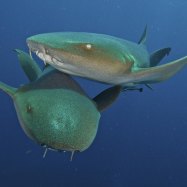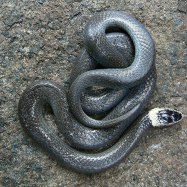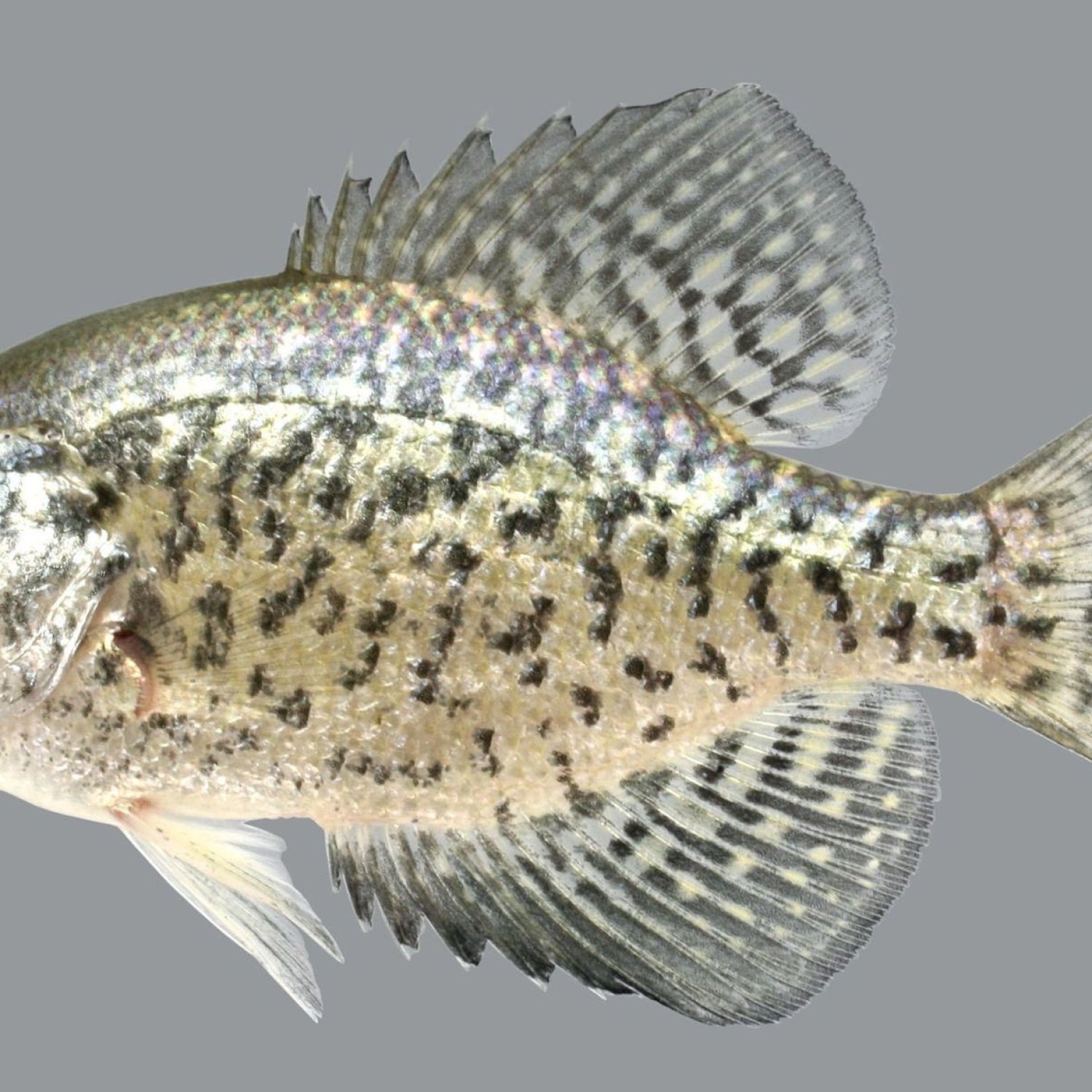
Crappie Fish
7 to 20 inches
The Crappie Fish, belonging to the Centrarchidae family, can grow up to 20 inches in length and are commonly found in lakes, ponds, and rivers. With its deep and compressed body shape, this fish is known for its delicious taste and preferred by many anglers. Keep an eye out for this elusive and tasty species on your next fishing trip in the great outdoors. #CrappieFish #AnglerFav #FreshwaterFishing.
Animal Details Summary:
Common Name: Crappie Fish
Kingdom: Animalia
Habitat: Freshwater
The Intriguing Crappie Fish: A Deep Dive into its Habitat and Behavior
The world is full of remarkable creatures, and one of them is the crappie fish. You may have seen them swimming in the lakes, ponds, and rivers of North America, but there's more to this creature than its appearance. The crappie fish, with the scientific name Pomoxis, is a species of freshwater fish that belongs to the kingdom Animalia and phylum Chordata. Let's take a closer look at this interesting fish, its habitat, and behavior Crappie Fish.A Fish with Many Names
The crappie fish is known by many names, including papermouth, goggleye, speckled perch, and bachelor perch. But the most common name for this fish is simply "crappie," derived from the French term "crapet," which means small fish. This unique name reflects its petite size compared to other freshwater fish species.Classification and Distribution
The crappie fish belongs to the class Actinopterygii, which translates to "ray-finned" in Greek. This class includes more than 30,000 species of fish, including some of the most popular ones like salmon, tuna, and trout. The crappie fish is part of the order Perciformes, which is the largest order of vertebrates, with more than 40% of all vertebrate species belonging to it. This order includes other popular fish like perch, bass, and sunfish.The crappie fish is endemic to North America, with its native country being the United States. It can be found in freshwater bodies such as lakes, ponds, and rivers, making it a common sight for anglers and fishing enthusiasts Click Beetle.
The Perfect Carnivore
As a carnivorous fish, the crappie feeds on a range of small aquatic creatures, including insects, crustaceans, and smaller fish. It has a voracious appetite, and its diet mainly consists of zooplankton, water bugs, and minnows. However, its preference may vary depending on its location and availability of food sources.Crappies have sharp spines on their dorsal fins and gill covers, making them excellent predators. They use their sharp teeth to grip onto their prey and swallow them whole. This aggressive feeding behavior, combined with their impressive speed, makes them a formidable predator in the freshwater ecosystems.
A Colorful Creature with a Unique Body Shape
The crappie fish may seem unassuming at first glance, but its coloration is striking. It can vary from silver to green with dark vertical stripes, and sometimes with a hint of yellowish tinge. This coloration helps them blend into their surroundings, making it easier for them to hunt and avoid being preyed upon.Aside from its color, the crappie fish also boasts a unique body shape. Its body is deep and compressed, with a narrow head and a pointed snout. This shape helps them navigate through dense underwater vegetation and allows them to move effortlessly in the water.
The Adventures of the Crappie Fish
The crappie fish is not only an impressive predator, but it's also known for its adventurous spirit. During spring, crappies can be found near the shoreline, where they gather in shallow waters to spawn. Once spawning is complete, they move back to deeper waters in search of food.Crappies are also known to explore different parts of the freshwater ecosystem, including creek channels, flooded timber, and deep underwater structures. They are curious creatures and are attracted to new and exciting environments, making them a favorite target for anglers.
During winter, crappies exhibit a unique behavior known as "schooling." They gather in large groups, usually near underwater structures, to stay warm and conserve energy. This behavior is beneficial for anglers as it increases the chances of catching multiple fish in one location.
Conservation Status
Despite being a popular sport fish, the crappie is not considered endangered or threatened. However, there are factors that can potentially impact their population, such as overfishing and water pollution. To preserve their natural habitats, catch limits and size restrictions have been imposed in some states. It's crucial to follow these regulations to maintain a healthy population of crappie fish.Applications in Natural Language Processing
The study of natural language processing (NLP) is closely related to the way humans communicate and process language. As we strive to understand more about the world and the creatures around us, NLP can play a significant role in analyzing large amounts of text data related to various species and their behaviors.With advanced NLP techniques, scientists can gather and analyze data on the crappie fish, including habitat, diet, and behavior. This can provide valuable insights into the dynamics of freshwater ecosystems and the interconnectivity between different species, furthering our understanding of the natural world.
Final Thoughts
The crappie fish may seem like a simple creature at first, but it's a fascinating species with a unique set of features and behavior. Its adventurous spirit, exceptional feeding abilities, and attractive coloration make it one of the most sought-after freshwater fish for anglers. While it may not be in any immediate danger, it's essential to conserve and protect its natural habitats to ensure its survival for future generations to come. So, the next time you spot a crappie fish, take a moment to appreciate its beauty and significance in the underwater world.

Crappie Fish
Animal Details Crappie Fish - Scientific Name: Pomoxis
- Category: Animals C
- Scientific Name: Pomoxis
- Common Name: Crappie Fish
- Kingdom: Animalia
- Phylum: Chordata
- Class: Actinopterygii
- Order: Perciformes
- Family: Centrarchidae
- Habitat: Freshwater
- Feeding Method: Carnivorous
- Geographical Distribution: North America
- Country of Origin: United States
- Location: Lakes, ponds, rivers
- Animal Coloration: Varies, can be silver, green, or yellowish
- Body Shape: Deep and compressed
- Length: 7 to 20 inches

Crappie Fish
- Adult Size: Varies depending on the species
- Average Lifespan: 5 to 8 years
- Reproduction: Sexual
- Reproductive Behavior: Spawning
- Sound or Call: No distinct sound or call
- Migration Pattern: Some populations exhibit limited migration
- Social Groups: Can form loose schools
- Behavior: Mostly active during dawn and dusk
- Threats: Habitat loss, pollution, overfishing
- Conservation Status: Not evaluated
- Impact on Ecosystem: Important prey species
- Human Use: Popular game fish
- Distinctive Features: Large mouth, long dorsal fin
- Interesting Facts: Crappie are often referred to as panfish due to their size and flavor
- Predator: Larger fish, birds
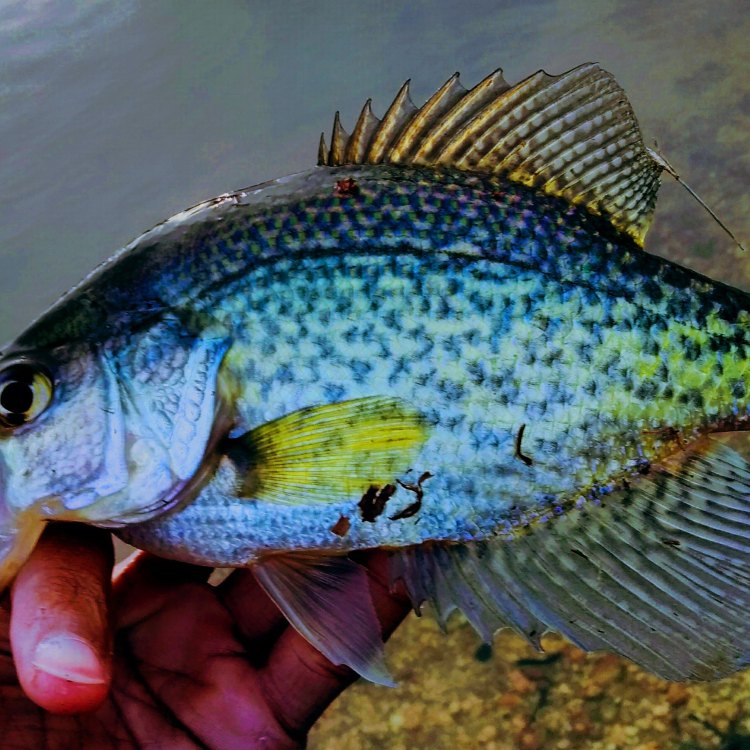
Pomoxis
The Enigmatic and Delicious Crappie Fish: Exploring the Unique Features of this Popular Game Fish
When it comes to freshwater fishing, there is no shortage of unique and fascinating species to catch. One fish that stands out in both appearance and taste is the crappie. This fish, also known as a "panfish," has captured the hearts of anglers all over the world. But what makes the crappie so captivating? In this article, we will delve into the distinctive features of this species, its behaviors, and its importance to ecosystems and human use PeaceOfAnimals.Com.The Basics of the Crappie Fish
Crappie fish are a type of sunfish that can be found in North America, mainly in freshwater lakes, rivers, and ponds. They are a popular game fish due to their small size, making them easy and fun to catch for both beginners and seasoned anglers. Crappie come in two main species: the black crappie (Pomoxis nigromaculatus) and the white crappie (Pomoxis annularis). The average adult size may vary depending on the species, but they typically range from 6 to 12 inches in length. They have a relatively short lifespan, living on average between 5 to 8 years.Reproduction in crappie is sexual, with males and females participating in spawning behavior. Like most fish, crappie do not produce any distinct calls or sounds. However, during the spawning season, they do make a soft drumming sound by vibrating their swim bladder. This sound helps attract potential mates Cat.
Behavior and Social Habits of Crappie Fish
Crappie are generally social fish that can form loose schools. These schools can consist of up to 20 individuals and are often composed of fish of similar size. This behavior is most common during their spawning season, where they come together to reproduce and then disperse afterward. Crappie are mostly active during dawn and dusk, making them most active around low light conditions.Although some populations may exhibit limited migration, crappie are not known to be migratory fish. They prefer to stay in the same area throughout the year, as long as it provides them with their basic needs like food and shelter.
Distinctive Features of the Crappie Fish
One of the most striking features of the crappie fish is its large, gaping mouth, which is lined with sharp teeth. This mouth allows them to quickly eat and swallow their prey, which primarily consists of insects, crustaceans, small fish, and zooplankton. Additionally, crappie sport an elongated dorsal fin, which gives them a sleek appearance in the water. This fin is also used for balance and propulsion, allowing them to swim smoothly and swiftly through the water.The Impact of Crappie on Ecosystems
Crappie may be small in size, but they play a vital role in their ecosystem. As an important prey species, they provide a food source for larger fish and birds. Without crappie, these predator populations may decline, causing a ripple effect throughout the food chain. Furthermore, crappie help to control the population of smaller aquatic species, maintaining a healthy balance in their habitat.Threats to Crappie Fish and Conservation Status
Unfortunately, crappie are facing threats that are endangering their populations. Habitat loss due to water pollution and human activities such as land development and deforestation has significantly impacted their ability to survive and thrive. Additionally, overfishing is a significant threat to their populations, as they are such a popular game fish. Crappie have not been officially evaluated for their conservation status; however, these threats highlight the need for their protection and preservation.The Human Use of Crappie Fish
As mentioned earlier, crappie are a popular game fish due to their size and flavor. Anglers across North America enjoy fishing for crappie for recreational purposes. They are also commercially fished for their flesh, which is white, flaky, and delicious. Often referred to as panfish, crappie are a staple in many traditional and modern dishes, making them an essential part of many cultures' cuisine.Interesting Facts about Crappie Fish
Crappie are not only unique in appearance and behavior, but they also have some fascinating facts that make them stand out in the underwater world. For example, their name is believed to have been derived from the French word "crape," which means small fried fish. This name is fitting for these fish as their size and delicious taste make them perfect for frying. Additionally, crappie can change their coloration based on their surroundings. This ability helps them camouflage and stay hidden from predators.Predators of Crappie Fish
As with any species, crappie have predators that prey on them for sustenance. Some of the common predators of crappie are larger fish, birds, and other aquatic animals. However, crappie have evolved to have a relatively short lifespan. This adaptation, coupled with their fast reproductive rate, ensures that their populations remain stable despite being preyed upon.The Future of Crappie Fish
Thanks to their adaptability and resilience, crappie fish populations are currently stable throughout North America. However, it is essential to monitor their populations and address the threats they face to prevent any decline in their numbers. As responsible anglers and stewards of the environment, it is vital to practice ethical fishing and ensure the preservation of crappie and their habitats for generations to come.In Conclusion
In conclusion, the crappie fish is a fascinating species with unique features that make it stand out in the world of freshwater fish. From their distinctive appearance and behavior to their importance in ecosystems and human use, crappie continue to capture the hearts of anglers and food lovers alike. As we continue to appreciate and enjoy these fish, it is crucial to ensure their conservation and protection for the benefit of both the environment and our taste buds. So next time you cast your line for a crappie fish, take a moment to appreciate all the features that make them such a beloved and vital species.
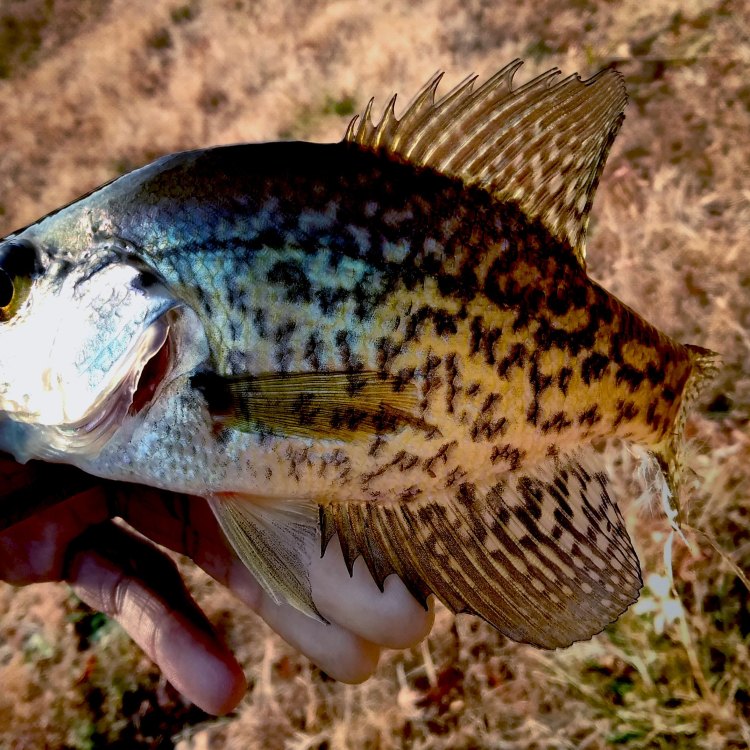
The Intriguing Crappie Fish: A Deep Dive into its Habitat and Behavior
Disclaimer: The content provided is for informational purposes only. We cannot guarantee the accuracy of the information on this page 100%. All information provided here may change without prior notice.







